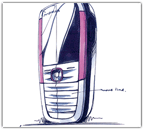Berg Insights: Massive increase in NFC handsets and the future of NFC wallet infrastructure
19 June, 2013
category:
A recent research report conducted by Berg Insight revealed that global sales of NFC-enabled handsets grew 300% year over year from 2011 to 2012, reaching 140 million units shipped to date, and an estimated 1 billion units to be shipped by 2017. Berg believes that growth at this level – a compound annual growth rate of 48.2% – will greatly shape the future of NFC technology.
Widespread adoption of NFC in mobile devices began in 2011 and experienced a boost in 2012 following the release of nearly 100 NFC-enabled models. Despite the increase in user devices, Berg Insight expects that agreement on an effective business model for mobile payment networks and access to the secure elements storing sensitive user data in NFC handsets will still take some time.
“It is the sum of many possible use cases for NFC rather than one single killer app that will make the technology compelling for smart phone vendors,” says André Malm, senior analyst at Berg Insight. “Once developers gain experience with NFC and get access to a larger installed base of compatible handsets, we can also expect to see entirely new use cases not yet imagined.”
NFC for payments
One area where NFC technology has been expected to shine is in mobile payments, but Berg Insight stresses that the m-wallet initiatives currently in effect have failed to reach a majority of consumers. At the end of Q1 2013, NFC mobile wallet services were commercially available in only 13 countries worldwide, a figure that is up from just 6 countries in 2011.
“With the exception of a few projects in Asia-Pacific, there are only three NFC mobile wallet services in the world that have an effective addressable market of more than 100,000 people,” explains Lars Kurkinen, telecom analyst for Berg Insight. “These three services are Google Wallet and Isis in the US and Turkcell Wallet in Turkey.”
Though the number of m-wallet initiatives remains limited at present, Berg expects this to change considerably in the coming years following enormous rollouts of NFC-enabled phones, NFC-ready POS terminals and TSM solutions.
The number of global NFC-enabled handsets touched 170 million units by year’s end 2012 – 3.3% of all mobile handsets in use. Berg posits that this figure will maintain a compound annual growth rate of 65% in the coming years with the total number of NFC-enabled handsets forecasted to reach 2.1 billion units by 2017. To accompany this figure, Berg estimates that the penetration rate for NFC-enabled handsets in 2017 will reach 32%.
To accompany the boost in NFC handsets, Berg sees big things in NFC-ready POS terminal shipments in the coming years. Global shipments of NFC-ready POS terminals doubled to an estimated 3.9 million units in 2012.
Terminal vendors like VeriFone and Ingenico are now including NFC as a standard feature in many of their products. As Berg forecasts, increased support from vendors will help to increase the global installation of NFC-ready POS terminals at a CAGR of 46.1% – from 6.7 million units in 2012 to an estimated 44.6 million units by 2017.
Trusted Service Manager solutions – a necessity for the secure issuance of payment credentials over-the-air to NFC phones – are being implemented more than ever before by mobile network operators, banks and other companies. By year’s end, there will be an estimated 140 companies worldwide using some form of Trusted Service Manager solution in commercially live NFC mobile wallet services, up from only 57 companies at the end of 2012. The most active region for TSM projects is currently Asia-Pacific, followed by Europe, North America and the Middle East.
The future of m-wallets
The above figures are important, as Berg Insight believes in-store mobile wallet payments are poised for a massive spike in the coming years.
Despite only logging €100 million worth of transactions in Europe this past year, in-store mobile payments are expected to grow at a compound annual growth rate of 275%, reaching € 45 billion by 2017. The number of mobile wallet solutions and outlets grows more by the day, and Berg expects that by the end of 2013, mobile wallet services will be commercially live in half of all European countries.
The companies and vendors that bolster these wallet services include a number of household names in mobile operators, banks and retailers with T-Mobile, Orange, Telefónica, BNP Paribas, Barclays and Auchan all displaying their support for mobile wallet payments.
In North America, mobile wallet users logged a total of $500 million worth of in-store payments during 2012. Not surprising, a vast majority of these m-payments were made using Starbucks’ popular smart phone app, while universal mobile wallets – Isis, Google Wallet and MCX – have yet to garner widespread adoption. According to Berg, these universal mobile wallets are expected to drive the majority of the mobile in-store purchases, at a projected $44 billion by 2017.
While the landscape that payments offers for NFC is promising, and key partnerships being formed between mobile network operators, financial institutions and retailers reassuring, mobile wallets need to attract the mass market. Berg believes that a broader range of services and solutions that reaches beyond just payments must be made available to consumers.



